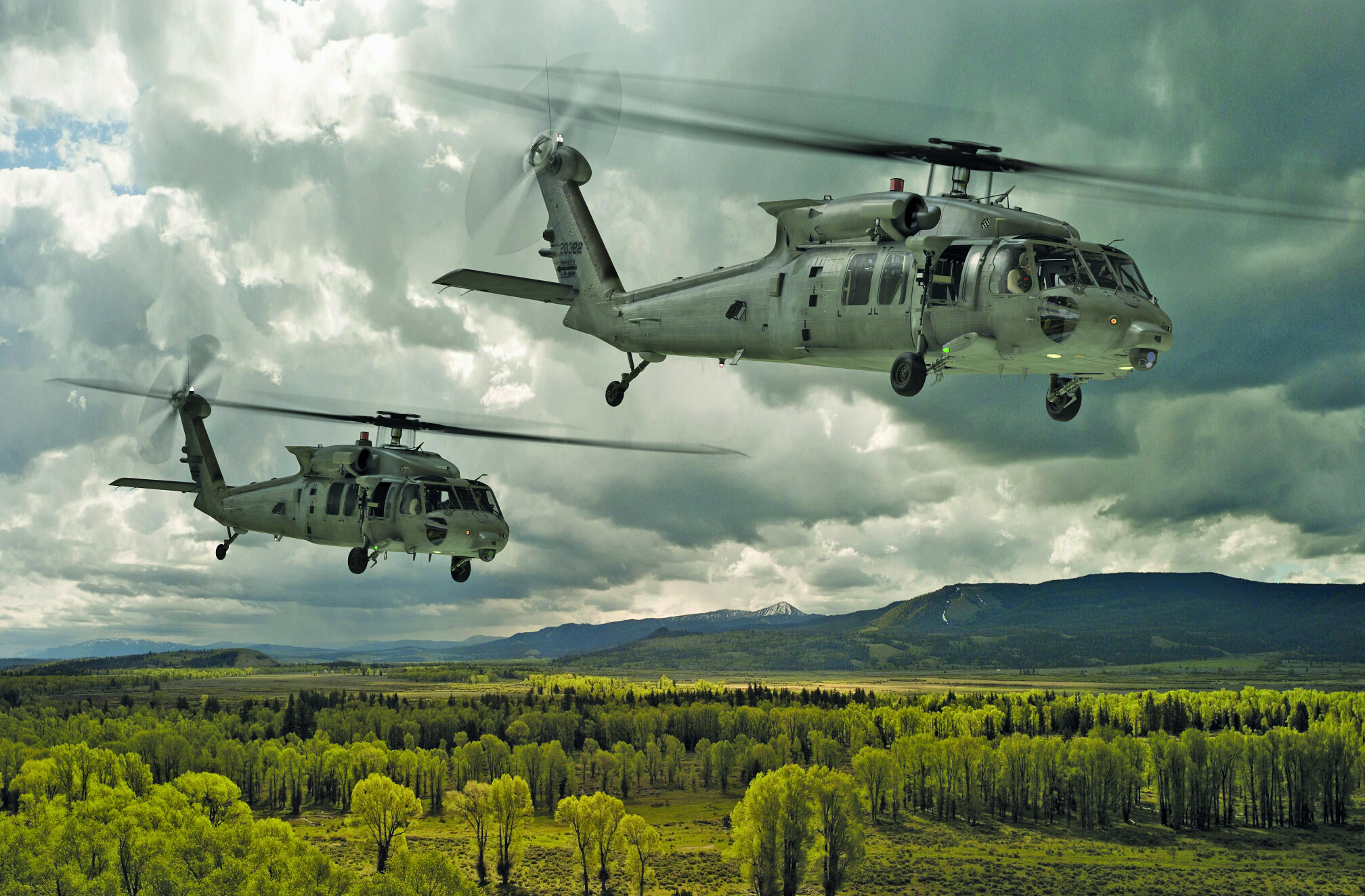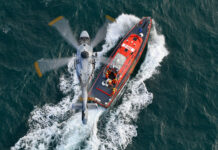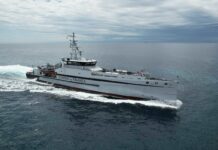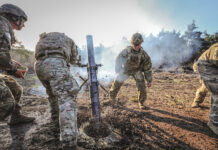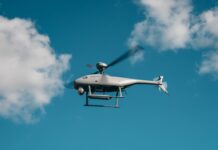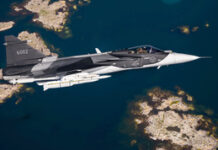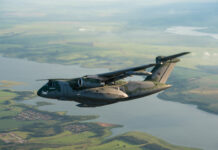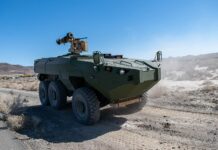In the global defence and security arena today, few pieces of equipment
are more important than Medium Support Helicopters.
Ever since rotary wing aircraft first began supporting military operations in the aftermath of World War 2, in theatres as diverse as Korea and Algeria, Medium Support Helicopters have only grown in importance. Definitions of different helicopter categories vary, but medium (as opposed to light and heavy) support helicopters generally sit between 14,000 and 45,000 lbs. As a result of their importance, companies all over the world are continually marketing solutions in the category.
A Major American Programme
Perhaps one of the most recognisable Medium Support Helicopters is the Sikorsky UH-60 BLACK HAWK family. Making its first flight in 1974 and entering service with the US Army five years later, this iconic aircraft has been deployed in a wide range of theatres from the Caribbean to the Gulf and the Balkans, alongside operations in Iraq and Afghanistan. It has won a large number of export orders and has been developed in specialist variants for the US Navy, Air Force and Coast Guard. However, the US is now looking to future technologies in order to replace this famous type.
The Future Long Range Assault Aircraft (FLRAA) programme has the purpose of delivering a next generation rotorcraft to replace the BLACK HAWK, with the first units becoming operational in 2030. FLRAA is being conducted under the aegis of the Future Vertical Lift (FVL) programme, alongside the Future Armed Reconnaissance Aircraft (FARA) requirement.
The key specifications for FLRAA are to supply an aircraft able to carry 12 assault troops with a maximum speed of 230 knots (twice that of the BLACK HAWK). The winning aircraft must have a combat range of 230 Nautical Miles (also double the UH-60’s limit) and an overall unrefuelled range of 460nm. These range requirements are to cater for the increased distances inherent in the Asia-Pacific theatre, where the US Army is likely to be conducting a large number of its future operations. The winning aircraft must also have open architecture systems to enable software upgrades over its service life. To achieve these exacting specifications, the US’s main rotorcraft producing companies are banking on innovative new technologies.
FLRAA Competitors
Of the two shortlisted competitors, the first is from Bell, offering the V-280 VALOR tilt rotor design. Drawing on the experience accrued during the design and production of the V-22 OSPREY for the US Marine Corps, Air Force and Navy, this proposal will take tilt rotor technology a step further. The key distinguishing feature of this design is that only the blades of the engine will rotate when transitioning from horizontal to vertical flight (and vice versa). By contrast on the V-22 OSPREY, the entire engine Nasal rotates. The prototype made its maiden flight in December 2017 with the company continuing to refine it as part of the development process.
Also competing for the FLRAA contract is a partnership between Boeing and Sikorsky, also offering a distinctive design with several innovative features. This marks a culmination of many decades work for Sikorsky (which is now owned by Lockheed Martin) in its development of X2 technology. This involves a coaxial, counter rotating, main rotor and, instead of a conventional tail rotor, a set of coaxial ‘pusher’ blades. The company reports that this enables the aircraft to fly faster, over greater distances and performer tighter turns.
The proposed aircraft, which has yet to fly, has been named the DEFIANT X by Sikorsky. From what has been revealed publicly, it has next generation features including radar cross-sections reduction, fly-by-wire technology (also offered on the V-280) and a helmet mounted display similar to that deployed on the F-35 LIGHTNING II fifth-generation fighter. Following the rigorous selection process, the winning design will be selected later this year.
Away from the US, NATO member states the UK, France, Germany, Italy and Greece have signed an MoU to further the Next-Generation Rotorcraft Capability (NGRC) to replace their existing types such as the AW101 MERLIN, another Medium Support Helicopter used by several countries around the world, in addition to the NH-90. A further agreement was signed by the partners (with the Netherlands as an observer) in February 2022 to take this possible solution to the next stage. However, little details of this exist as yet so several of these countries are pursuing more immediate programmes.
New Medium Helicopter
Perhaps one of the most significant Medium Support Helicopter requirements extant today is the UK’s New Medium Helicopter (NMH) programme. This was announced in the 2021 Command Paper entitled Defence in a Competitive Age. The aim of the NMH programme is to rationalise the UK’s Medium Support Helicopter fleet with a single type replacing several legacy models. The most prominent aircraft in need of replacement is the PUMA HC2 which has been in service with the RAF since the early 1970s, providing utility support across a wide variety of theatres. NMH also aims to replace GRIFFON HAR2 helicopters operated by the RAF’s 84 Squadron out of the Cyprus Sovereign Base Areas in roles including utility, firefighting and Search & Rescue (SAR). This is in addition to Bell 212s deployed to support the British Army presence in Brunei and the Eurocopter AS365 DAUPHINs used to support the UK’s special forces. The Command Paper placed a great emphasis on the UK having forces forward deployed around the world in order to react to situations as they emerge. Therefore, having a Medium Support Helicopter forward based in locations such as these marks a manifestation of this doctrine. The project has attracted a wide amount of interest from across industry with several major manufacturers expressing an interest.
UK Options for Medium Helicopters
One of the earliest to present a solution was Leonardo UK which is offering a military derivative of the AW149 medium support helicopter. If successful, Leonardo has said the aircraft, which is already in service with the Italian Armed Forces in addition to those of Egypt and Thailand, would be built at the company’s facility in Yeovil, Somerset. This factory has a long history of supplying the UK Armed Forces with helicopters dating back to the Westland Helicopter Crisis of the 1980s. Another notable contract was the manufacture of AH-64D LONGBOW APACHEs under license from Boeing, where they were designated the WAH-64. The plant has also supplied the UK, and limited export customers, with the AW101 MERLIN and AW159 WILDCAT helicopters. In promoting their bid, Leonardo’s promotional material has demonstrated the AW149 in several configurations including:
- Troop transport
- Casualty Evacuation
- Airborne Command Post
- Close Air Support
- Special Forces
- Cargo Resupply
A model of the AW149 featured prominently at Leonardo’s pavilion during the DSEI 2021 exhibition in London last year. The company argues that the UK selecting this aircraft for NMH could lead to significant new exports. This claim has also been made by rival manufacturer Airbus. A model of their solution was also displayed at DSEI 2021. This would be a military version of the H175 helicopter which as been deployed since 2014 in a wide variety of civilian roles including SAR, VIP transport and Offshore Oil & Gas support. In a bid to market its proposal, Airbus has proposed to build the helicopter at a new facility within its site in Broughton, North Wales, where the company currently manufacturers wings and landing gears for its portfolio of civilian airliners. These are the two most detailed proposals at time of writing but others are likely to enter the mix. Another likely frontrunner is a variant of the ubiquitous BLACK HAWK, potentially built at Lockheed Martin/Sikorsky’s facility in Poland. Also touted as an option is the Bell 525 RELENTLESS, an advanced civilian type with features including composite construction, fly-by-wire and side stick controls that is currently undergoing certification, with the company saying it will bid.
The contract is valued at £1Bn for between 36 and 44 helicopters (alongside simulators and support services). A contract is expected to be published in the middle of 2022 with the aircraft entering service from the mid 2020s. The UK has also signed an agreement with the US to exchange information on the latter’s FVL programme, opening the door to cooperation by the two countries on vertical lift solutions going forward.
NH-90 Proliferation
Another country seeking to modernise its legacy fleet with a common solution is France. Over the last two decades, France has been replacing a larger number of helicopter types with single fleets. The most prominent example of this is the NH-90 family. Produced by the NHIndustries consortium consisting of Airbus Helicopters, Leonardo and Fokker, the French Army has deployed the Tactical Transport Helicopter (TTH) variant and the French Navy the NATO Frigate Helicopter (NFH) model. The former has largely replaced early versions of the PUMA family in the tactical transport role and has already been deployed to support French operations in Mali.
With a composite fuselage, the NH-90 TTH features a glass cockpit, fly-by-wire controls, helmet symbology by virtue of the Thales TopOwl helmet mounted display for the pilots and capacity for 20 fully equipped troops. It also has a ramp at the rear for loading and offloading cargo. This aircraft has also been deployed from France’s MISTRAL class Landing Platform Helicopter (LPH) ships. Going forward, France plans to induct 10 improved NH-90 TTHs from 2025 which are optimised for special forces operations. This will be done through improvements to the cockpit avionics to allow operations in challenging conditions and greater options to deploy guns from the cabin.
Wider Use
In addition to France, several countries across Europe utilise the NH-90. The German, Spanish, Greek and Finnish Armies currently field the type in the medium support role. Norway and Sweden also use it for maritime applications This is in addition to the Italian Army, which deployed it to Afghanistan during the latter stages of the International Security and Assistance Force deployment in both the medium support and aeromedical evacuation roles. In March 2016, Italy announced that four NH-90s, alongside four AW-129 MANGUSTA attack helicopters, would be deployed to Northern Iraq under the Aegis of the international operation countering so-called Islamic State. The primary mission of these aircraft was providing Combat Search and Rescue (CSAR) for allied combat aircraft operations in the area. The force also protected Italian personnel working to protect the Mosul Dam, located near Erbil were the force was based.
In addition to the TTH variant operated by the Italian Army, the Italian Navy operates the NFH variant from its fleet of surface combatants. The service has also taken delivery of 10 Maritime – Italian Navy Tactical Transport examples. This sub-variant has key features such as the rear-ramp of the TTH but also has modifications including the maritime optimised landing gear found on the NFH. Since taking delivery of the final aircraft in September 2021, the Italian Navy announced that it will used for amphibious and special operations.
Although it has enjoyed several successes, the NH-90, which like many large collaborative defence programmes suffered significant delays, continues to suffer setbacks. Earlier this year, the Australian Department of Defence announced that the aircraft, which has the local designation MRH-90 TAIPAN, would be withdrawn from service early. The reasons given for this were not meeting requirements due to problems which include, amongst others, difficulties for personnel when entering and exiting the aircraft. As a result, Australia has announced plans to purchase a more modern version of the BLACK HAWK as a replacement.
Descendants of the PUMA
Although European industry continues to promote the NH-90, there is still a role for the ever evolving PUMA family. In addition to the COUGER ( a militarised variant of the civilian SUPER PUMA) an evolution of the original with enhanced engines and avionics, France also operates the H225M CARACAL. This is another continuation of the PUMA family which has the added option of an air-to-air refuelling probe. France uses this in the CSAR and special forces support roles in conjunction with the new KC-130J SUPER HERCULES tanker variants jointly operated with Germany. This is a type France has successfully exported to states including Brazil and the Gulf nations of the UAE and Kuwait in addition to Singapore. Some of these customers have integrated the EXOCET anti-ship missile onto the H225M for maritime strike missions.
French Innovation
While France continues to successfully export defence equipment such as the RAFALE multi-role combat aircraft, the country continues to innovate in the rotary wing sector. Lighter helicopter types are deployed across the French Armed Forces in a wide variety of roles. These range from the GAZELLES flown by the army for armed reconnaissance missions to SAR DAUPHINS operated by the Navy and FENNECs deployed by the Air and Space Force to counter slow aircraft posing a threat in domestic airspace. In the spirit of commonality, France has chosen a medium support helicopter to replace these. The favoured solution is the H160M based on the H160 civil helicopter produced by Airbus helicopters.
In December 2021, France placed an initial order for 30 of these aircraft, which will be called the Guépard in French service across the three military branches. The eventual plan is for 169 examples. Artist impressions show the Army and Air Force variants utilising forward firing gun pods and the Navy version with a VENOM anti-ship missile. All variants feature an EO/IR pod on the chin and the TopOwl helmet sight from Thales for situational awareness.
The maritime one will be deployed from various surface ships in the French Navy. H160Ms will be delivered from 2027 but the French Navy has started operating civilian examples from land bases to cover the crucial SAR role in both the North and South of the country. This frees up higher end helicopters such as the NH-90 for combat deployments. It has also been reported that the H160M could be offered for the UK’s NMH requirement.
A Russian Veteran
Away from the various Western aircraft on offer, Russia has significant pedigree in the production of Medium Support Helicopters. One of the most widely used in both the former Soviet Union and the wider world is the Mi Mi-8. Making its first flight in 1961, the type was shortly afterwards given the NATO reporting name HIP. The aircraft has also been refined into the Mi-17 which has given it improved performance in high altitude environments. This family of aircraft was used by the former Soviet Union in a wide variety of roles. This included the support of air assault operations during the invasion of Afghanistan down to the delivery of humanitarian aid during the 1980s famine in Ethiopia.
Footage from Ukraine also shows what appear to be these aircraft taking part in the Russian offensive. On the export market, the HIP family has been sold to countries as diverse as India and Peru to name just two. Today, is it built by the Moscow Helicopter Plant, the Kazan Helicopter Plant and the Ulan-Ude Aviation Plant in a wide variety of variants including, gunship, electronic warfare, airborne command post and SAR.
India
One of the main customers for the HIP family is the Indian Armed Forces, but India is now seeking to diversify its supply of defence equipment under Prime Minister Narendra Modi’s flagship “Make in India” initiative. The country has had an indigenous aircraft design and manufacturing industry since independence from the UK in 1947 but this has since expanded to include helicopters. Following on from the Hindustan Aeronautics Limited (HAL) DHRUV utility helicopter, which has been procured by the Indian Armed Forces in addition to both domestic and international civilian customers, the company is moving into the Medium Support Helicopter market. This takes the form of the proposed Indian Multirole Helicopter (IMH) which will have to be compatible with hot and high conditions encountered across large parts of the country.
South Korea
Another state in the Asia-Pacific region facing significant security challenges for which it is modernising its Armed Forces is South Korea. After many decades relying on imported equipment from the US, among other states, this country boasts a thriving aerospace and defence industry. Alongside flagship combat aircraft recapitalisations such as the T-50 GOLDEN EAGLE trainer family and K-X BORAMAE stealth combat aircraft project, the country has made significant upgrades to its rotary wing capabilities.
On the Medium Support Helicopter side, this has been best demonstrated by the Korean Aerospace Industries (KAI) SURION. This is a derivative of the SUPER PUMA and has been deployed by the Republic of Korea Army since 2021 in a variety of missions including utility support, Medical Evacuation and amphibious operations. This final variant is named the MARINEON and features key modifications such as folding rotor blades in order to facilitate operations from ships such as the Republic of Korea Navy’s DOKO class LPHs. At the ADEX 2021 expo, KAI also unveiled an armed version of the MARINEON to fulfil the South Korean Marine Corps need for an attack helicopter.
Conclusion
The Wars in Iraq and Afghanistan saw Western forces turn to Medium Support Helicopters to improve speed, capacity and endurance for purposes including the resupply of troops, medical evacuation and rapid force movements to match the mobility of insurgent adversaries. As the world becomes more unpredictable, the capabilities supplied by these aircraft will only grow in importance.

